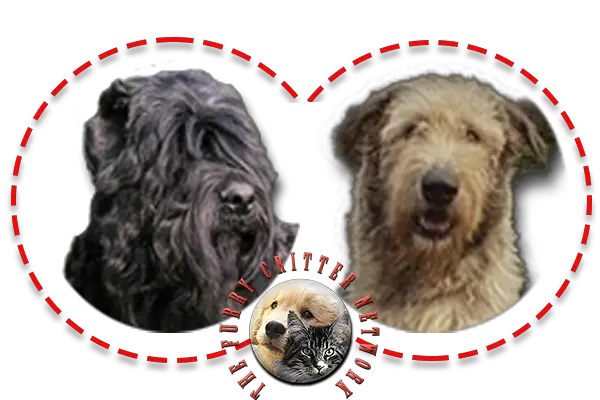Behavior
Irish Wolfhounds have a varied range of personalities and are most often noted for their personal quirks and individualism. An Irish Wolfhound, however, is rarely mindless, and, despite its large size, is rarely found to be destructive or boisterous in the house. This is because the breed is generally introverted, intelligent, and reserved in character. An easygoing animal, the Irish Wolfhound is quiet by nature. Wolfhounds often create a strong bond with their family and can become quite destructive or morose if left alone for long periods of time.
The Irish Wolfhound makes for an effective and imposing guardian, willing to protect individuals and their family from any threat. Despite this, they are not suited to guard a house or their owner's possessions due to their independent and friendly nature. The breed becomes attached to both owners and other dogs they are raised with and is therefore not the most adaptable of breeds. Bred for independence, an Irish Wolfhound is not necessarily keen on defending spaces. A wolfhound is most easily described by its historical motto, "gentle when stroked, fierce when provoked".
They should not be territorially aggressive to other domestic dogs but are born with specialized skills and, it is common for hounds at play to course another dog. This is a specific hunting behavior, not a fighting or territorial domination behavior. Most Wolfhounds are very gentle with children. The Irish Wolfhound is relatively easy to train. They respond well to firm, but gentle, consistent leadership. However, historically these dogs were required to work at great distances from their masters and think independently when hunting rather than waiting for detailed commands and this can still be seen in the breed.
Irish Wolfhounds are often favored for their loyalty, affection, patience, and devotion. Although at some points in history they have been used as watchdogs, unlike some breeds, the Irish Wolfhound is usually unreliable in this role as they are often friendly toward strangers, although their size can be a natural deterrent. However, when protection is required this dog is never found wanting. When they or their family are in any perceived danger they display a fearless nature. Author and Irish Wolfhound breeder Linda Glover believes the dogs' close affinity with humans makes them acutely aware and sensitive to ill will or malicious intentions leading to their excelling as a guardian rather than guard dog.
He should not live in the city. He needs to run often in wide open spaces. He must be brushed weekly.
Health
Like many large dog breeds, Irish Wolfhounds have a relatively short lifespan. Published lifespan estimations vary between 6 and 10 years with 7 years being the average. Dilated cardiomyopathy and bone cancer are the leading cause of death and like all deep-chested dogs, gastric torsion (bloat) is common; the breed is affected by hereditary intrahepatic portosystemic shunt.
In a privately funded study conducted under the auspices of the Irish Wolfhound Club of America and based on an owner survey, Irish Wolfhounds in the United States from 1966 to 1986 lived to a mean age of 6.47 and died most frequently of bone cancer. A more recent study by the UK Kennel Club puts the average age of death at 7 years.
Studies have shown that neutering is associated with a higher risk of bone cancer in various breeds, with one study suggesting that castration of male Irish Wolfhounds should be avoided at least until the dog is fully grown.






